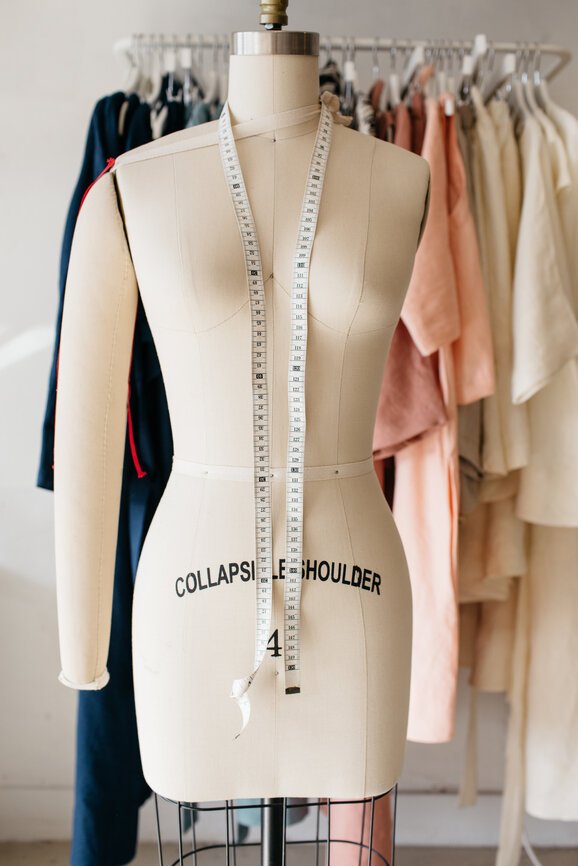
How Can We Finally Move Away From Synthetic Fabrics?
Synthetics Are Causing Plastic Pollution
If you frequent The Good Trade, you’ve probably seen us mention synthetic fabrics. You might even understand what they’re made of and their environmental impact. What you may not see, however, is just how large that impact is and how in the world it got to this point. Synthetics have had a long and involved history, growing alongside the Western world as it moved towards industrialization and away from the usage of natural resources. It’s a classic tale of boy meets invention and invention slowly but surely wreaks havoc on the entire globe. Oh, is that not a thing? Whoops!
History of Synthetic Fibers
We can trace synthetic materials back to the 1800s. A Swiss-born chemist named George Audemars received the first patent for artificial silk, which he made from mulberry tree bark. Around the same time, English inventor Sir Joseph Swan created rayon. These fibers were made to mimic natural ones, though were produced using much cheaper and simpler methods.
The year 1894 saw big change in the textile industry as French engineer Hilaire de Chardonnet established the first commercial-scale production of artificial silk and built the first commercial plant for rayon. Simultaneously, British chemist Charles Frederick Cross generated research and developments that led to the invention of what we know today as viscose. In addition to these materials, towards the end of the 19th century, an accident led to the discovery of PVC (polyvinyl chloride), a lightweight plastic. The patent for PVC was filed in 1913.
About two decades later, the DuPont company changed fashion forever with their discovery of nylon, dubbed the “miracle fiber,” used in tights and other hosiery. The synthetics company pushed hard for the popularity of their new material and made it difficult for the use of natural fibers to compete in the marketplace. A little under a decade later in 1941, a group of chemists developed polyester at the Calico Printer’s Association, a British textile company. By the 1950s, research into synthetic fibers was widespread and, in 1959, spandex became the newest addition to the list. That same decade, the infamous Dupont company came out with wool-like acrylic fabric, expanding their synthetic collection.
“In 2014, imports of synthetic fabric overtook those of cotton in the United States and brought along a slew of issues.”
Plastic-made fibers hit a new high in the 1960s and 1970s due to the popularity of polyester in all levels of fashion. Production, use, and technology around synthetic fibers picked up, leading to the establishment of safety standards for synthetic materials. In the 1970s, a federal mandate was put in place to ensure standards for the flammability of these fabrics. Unfortunately, in 2014, imports of synthetic fabric overtook those of cotton in the United States and brought along a slew of issues.
Why These Materials are Harmful
Plastic-based materials are finding their way into oceans and waterways. Whenever we wash synthetic fabrics, they shed hundreds of thousands of microplastics that make it past the washing machine’s filtration system. These fibers account for an estimated 60% of the material in our clothes worldwide.
Vox recently published an article breaking down the reality of plastic pollution caused by clothing. The publication cited studies that discovered that 73% of fish found in the mid-ocean depths of the Northwest Atlantic had microplastics in their stomachs. This is especially concerning when paired with the 2017 report, from the International Union for Conservation of Nature, that 35% of microplastics in the ocean comes from synthetic textiles. In this piece, Vox also quotes marine scientist Imogen Napper, who co-authored a 2016 study on this very subject:
Think about how many people are washing their clothes on a daily basis, and how many clothes we all have. Even when we’re walking around, not washing our clothes, tiny fibers are falling off. It’s everywhere. – Imogen Napper
While it is immensely important to note their effect on the planet, we’d be remiss to leave out the impact these materials have on you, the consumer. Synthetic fabrics like polyester, considered “performance” material, make up much of the workout clothes available today. However, synthetics are sadly the perfect fibers for bacteria to live in.
Most athletic wear boasts of “moisture-wicking,” a process created to quickly remove sweat from your skin. While that may sound helpful, it actually tricks your body into sweating more, as it wicks away your sweat before the moisture can do its job of cooling down your skin. This can result in excessive sweating, dehydration, and the loss of minerals your body actually needs during workouts. Since our skin is the largest organ in our body, when our pores open up to release that vital sweat, it is also taking in all of the toxins found in synthetic-made performance wear.
How to Move Forward
It’s probably very clear to you now why there must be a change within the fashion and textile industries when it comes to the use of synthetics. What makes this challenging is the fact that synthetic clothing currently proves to be exponentially cheaper than natural fibers. In addition, many of the countries with the largest amounts of synthetic clothing are developing ones that lack proper wastewater filtering systems. The difficulty of reworking the entire modern manufacturing system seems daunting, to say the least.
Luckily, there are brands that source only natural and organic fabrics (our list of organic cotton brands here). Brands like Filium are using innovative, eco-friendly alternatives to petroleum and plastic-based clothing through a unique technology that transforms all natural fabrics (like cotton, linen, and wool) into materials that resist liquids, stains, and odor—without using any harmful chemicals. They call them “supernatural fabrics,” claiming they are able to outperform synthetics.
“Many experts believe the solution involves revolutionizing the way we’re washing garments at home.”
A need has grown in recent years for more brands, like Filium, to provide sustainable switches for consumers. At the same time, entire systems need to change. On a macro level, many experts believe the solution involves revolutionizing the way we are washing garments at home. Many have proposed the incorporation of proper filtration systems into all washing machines. This would prevent hundreds of millions of microplastics from being released into our water supply.
There are unfortunately no plans currently in place for this domestic upgrade, so in the meantime, we have to looks for other solution. Patagonia sells a product called Guppyfriend™ Washing Bag which holds your synthetics and keeps microplastics from leeching into the water. In addition, Girlfriend Collective recently launched a microfiber filter for washing machines that collects those microplastics before they reach waterways. Both are simple ways to lessen your environmental footprint.
Consumers can also consider washing and buying clothes less often, something often discussed within conscious living circles. While progress can seem slow, there’s hope for the future yet. Thank goodness for transparent reporting, expert research, and passionate brands working to make this industry a little bit healthier each day.
Audrey Stanton was born and raised in the Bay Area and is currently based in Los Angeles. She works as a freelance writer and content creator with a focus in sustainable fashion. Audrey is deeply passionate about conscious living and hopes to continue to spread awareness of ethical consumption.




